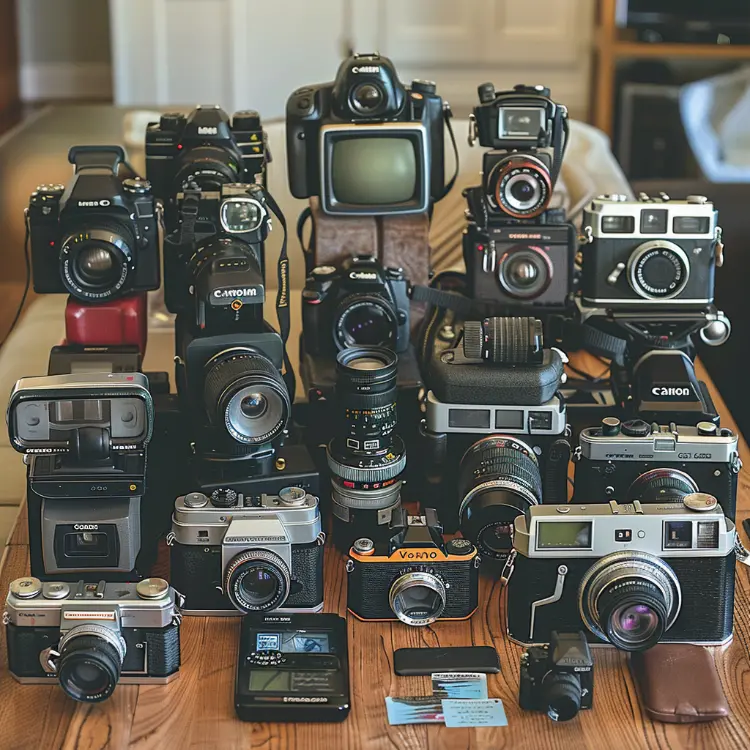Choosing the right camera equipment for photography involves considering various factors such as budget, type of photography, shooting environment, and whether to use digital or film cameras. While digital cameras dominate the market, film cameras still hold a unique place for certain applications.

Selecting the perfect camera equipment for photography requires careful consideration of budget, type of photography, shooting environment, and the choice between digital and film cameras. Despite the prevalence of digital cameras, film cameras remain valuable for specific scenarios. This article delves into the nuances of camera choices, offering insights and statistics to help you make an informed decision.
Digital cameras have become the go-to choice for most photographers due to their convenience and versatility. According to a report by Statista, the global digital camera market was valued at approximately $19.4 billion in 2020 and is expected to grow steadily [^1]. Digital cameras offer several advantages:
Despite the digital revolution, film cameras are still favored by some photographers for their unique qualities. Film offers a broader dynamic range and color depth, which can be crucial for certain types of photography. According to a survey by Ilford Photo, 60% of film photographers believe that film offers better image quality than digital [^2].
Most modern digital and 35mm SLR cameras use focal plane shutters. These shutters can travel either vertically or horizontally. High-end models offer flash synchronization speeds up to 1/250th of a second. For example, the Canon EOS R5 has a flash sync speed of 1/200th of a second [^3].
Between-the-lens shutters allow flash synchronization at all shutter speeds, making them ideal for outdoor photography where fill flash is necessary. Olympus' OM4 is a notable example, offering full flash sync at all shutter speeds when used with its dedicated flash system.
When using flash, it's essential to balance it with ambient light to avoid harsh shadows and overexposed subjects. For instance, if the ambient light requires an exposure of f/8 at 1/250th sec, you should set the flash to expose the subject at about one stop lower, around f/5.6. This technique ensures a natural look and preserves details in the subject's face and attire.
Experimenting with flash settings can yield creative results. For example, deliberately underexposing the background while correctly exposing the subject with flash can create a dramatic effect. If the ambient light suggests an exposure of f/8, setting the camera to f/11 or f/16 and adjusting the flash accordingly can produce striking images.
In bright daylight, using medium-speed ISOs (200-400) can necessitate high shutter speeds (1/250 to 1/500 sec) and smaller apertures (f/8 to f/16). If your flash sync speed is limited to 1/60th sec, you may need to adjust the exposure by several stops to maintain proper flash synchronization. This often requires additional light from your flash unit.
In low-light conditions, such as churches or reception halls, higher shutter speeds can help eliminate camera shake while maintaining the correct aperture for flash exposure. However, this often results in underexposed backgrounds, which may not be a concern in these settings.
Choosing the right camera equipment involves understanding the strengths and limitations of both digital and film cameras, as well as mastering various shutter and flash techniques. By considering these factors, you can make informed decisions that enhance your photography skills and results.
[^1]: Statista - Digital Camera Market [^2]: Ilford Photo - Film Photography Survey [^3]: Canon EOS R5 Specifications
Copyright (c) 2008 Tom Jackson

Be Your Own Boss, Start a Photography Business
Are you finding it difficult to make enough money to pay your bills in the troubled economy we find ourselves today? Starting your own photography business may be the best choice for you to make some cash to pay the bills.
Your Own Photography Business
Are you finding it difficult to make enough money to pay your bills in the troubled economy we find ourselves today? Starting your own business may not be the easiest choice, but it could well be the difference between being able to pay the bills or not. If you enjoy photography and have a good digital slr camera system, you can start your own business.
Start A Home Business with Photography
In the troubled economy we find ourselves today, starting your own business may not be the easiest choice, but it could well be the difference between being able to pay the bills or not.